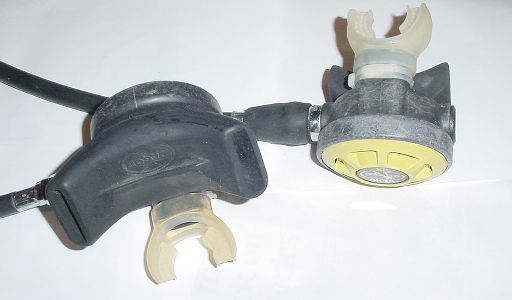 | ||
In underwater diving, an alternative air source, or more generally alternative breathing gas source, is a secondary supply of air or other breathing gas for use by the diver in an emergency. Examples include an auxiliary demand valve, a pony bottle and bailout bottle.
An alternative air source may be fully redundant (completely independent of any part of the main air supply system) or non-redundant, if it can be compromised by any failure of the main air supply. From the diver's point of view, air supplied by a buddy or rescue diver is fully redundant, as it is unaffected by the diver's own air supply in any way, but a second regulator on a double cylinder valve or a secondary demand valve (octopus) is not redundant to the diver carrying it, as it is attached to his or her main air supply. Decompression gas can be considered an alternative gas supply only when the risk of breathing it at the current depth is acceptable.
Effective use of any alternate air source requires competence in the associated skill set. The procedures for receiving air from another diver or from one's own equipment are most effective and least likely to result in a life-threatening incident if well trained to the extent that they do not distract the diver from other essential matters. A major difference from buddy breathing is that the diver using a redundant alternative air source need not alternate breathing with the donor, which can be a substantial advantage in many circumstances. There is a further significant advantage when the alternate air source is carried by the diver using it, in that it is not necessary to locate the buddy before it is available, but this comes at the cost of extra equipment.
